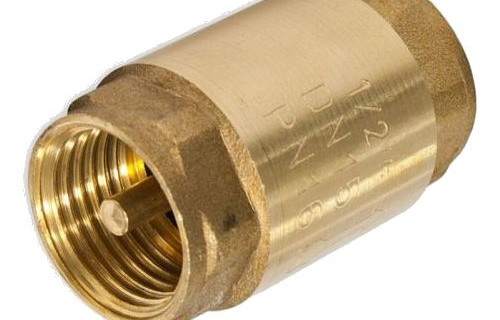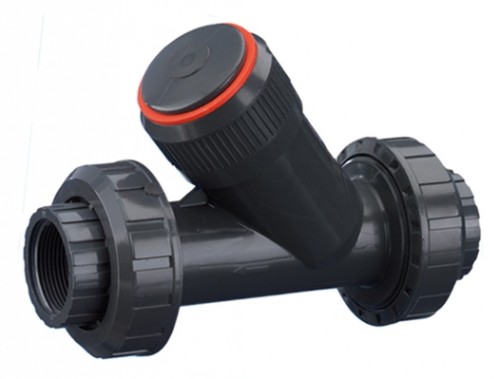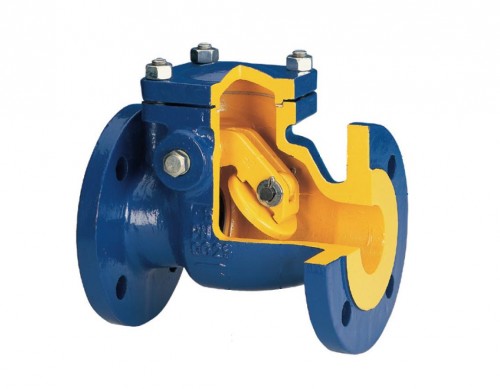
Installation of the check valve on the pump Plumbing

It is important to know that the check valve for the pump is an incredibly important thing. It is often installed in pipeline systems in order to ensure the movement of the medium (liquid, steam, gas). All this happens in one direction. "Reverse" in the title means that the valve does not allow the movement of fluid, gas or steam in the direction opposite to the existing one. Installation of the reverse valve for the pump to various systems is made if there are certain factors that create the opposition to the movement of the medium.
Content
Features of the use of check valves
Most often check valves are used in the following systems:
- in sewage;
- in heating;
- in water pipes;
- in wells and various pads, as well as in other water sources;
- in water meters;
- in water heaters.
The check valve for the water pump is an essential detail in water supply systems. It supports water pressure, and also provides continuous feed. The return valve looks like a brass cylinder. Integrated with a built-in spring, which holds a round overlapping plate. Often, the device is installed on the pump itself or before the pumping station. It all depends on which installation has characteristics and design features.
Under the action of the plate springs overlaps the fluid movement back to the pump, and holds the required pressure inside the pipeline. Such a principle of operation can significantly save funds, since in these conditions the installation does not have to pump water and create the necessary pressure every time, instantly providing all the necessary water supply parameters.
An important feature of using such a valve is to reduce the power of the pump. On average, this value decreases half the atmosphere. The required power is spent on the springs resistance present in the valve. Also a serious requirement to the valve is the necessary diameter that must correspond to the diameter of the pipe.
Important aspects of installing check valves
In the event that a pumping station is involved in the system, the valve must be in front of the pumping station or after ratchet on the main suction tube. It is the second option that is most often used, because other methods can significantly limit the amount of water, which is necessary for the drain process into the suction pipe and subsequent operations. It is also important to know that the pump together with the liquid can capture the air, which fills the suction tube after the drain of water. Such a process may affect the creation of a strong noise of the installation. In the event that the pump has a vibration principle of operation, the check valve should be installed before the receiver. It is best to do this anywhere in the injection pipeline, given the convenience for the work of the service personnel.
The installation method is as follows: the device is attached immediately before the station in the case of the required replacement. If it is decided to attach the valve immediately after the ratchet, where the suction pipe is supplied, the Sgon is not required.
If earlier the system has already functioned, the check valve between the pumping station and the pump itself should be installed. Instead of the first can be a receiver. The pipeline break is created and the valve is installed on one part of it. With the help of the CU, one component on the other is connected. If a specific water supply is designed to use it within high temperatures, then its lower part should be equipped with a tee and attach the crane for draining water into cool seasons.
The main features of the valve for the sewer systems and its installation
Installation of the reverse valve for the submersible pump in the sewage systems is necessary to prevent the returned outflow of various fecal masses. It is this device that does not allow the toilet to smash, and the general system of sewers is to be clogged by the waste of vital activity. The device of such a valve is pretty simple. Here we again have a special plate, which is attached to the spring lever. Under the plate there is a rubber gasket, a tightly closing outlet. Under the onslaught of water pressure, the plate rises into a horizontal position, and after weakening it returns to the initial position.
Reverse valves are made for sewage sewage, bronze, stainless steel, and polypropylene. The diameter of the valve opening can reach 100 mm. Often the device body is equipped with a special lid, when opening the ability to remove various contaminants.
The valve installation occurs after the pump and can be located both in the vertical position and in the horizontal. Installation of the device already in the current system occurs at the scene of the pipes of the required diameter, in this case the check valve is installed before the pump, but sometimes possible and other options. If the materials of the pipes and valve are different, special adapters should be purchased (for example, with cast iron to plastic and vice versa). The most important aspect when installing the valve is the place of installation. It must be accessible to convenient maintenance.
Features of the installation of check valves for heating
Most heating systems are equipped with special pumps and check valves that have a positive effect on the heating process.
Free circulation of water in heating systems means chaotic movement of water. In such cases, there is no installation of pumps or valves. Bypass is a device that provides parallel water supply. It helps to expand the limits of the capabilities of the heating system, as well as save a significant amount of resources. To work such a unit, it will not work without a pump and the check valve.
Such heating is called forced, and it has many positive economic factors. Free circulation implies additional water costs that ensure the movement of the fluid.
In our case, the circulation is performed using an electric motor that significantly reduces fuel consumption. Due to the small temperature difference between the pipes, the efficiency of the heating process is significantly increasing. Also appears the ability to control temperature indicators.
When using bypass, the reverse valve for the centrifugal pump is the necessary element of the system. With it, it takes place overlapping the circulation of the liquid in a small circle when the electric pump is operational. Installation of the device occurs between the pumping and suction pipes of the pump. In the process of operation of the engine, the rubber ball of the check valve is overlapped with a reverse tube opening. Such an action forces fluid to pass through the pump.
If the pump does not function, or there is no electricity, the hole opens under the action of water force, which automatically resumes the free movement of the fluid, as with the classic heating mode. However, it must be remembered that this also needs to cover the movement of water through the pump. The diameter of two pipes should be less than the value of the diameter of the heating tube.
For those who decided to switch to autonomous heating, the check valve for the water and centrifugal pump will allow to get rid of problems, as well as save a considerable amount of funds that often spend during the heating season in large quantities.






















